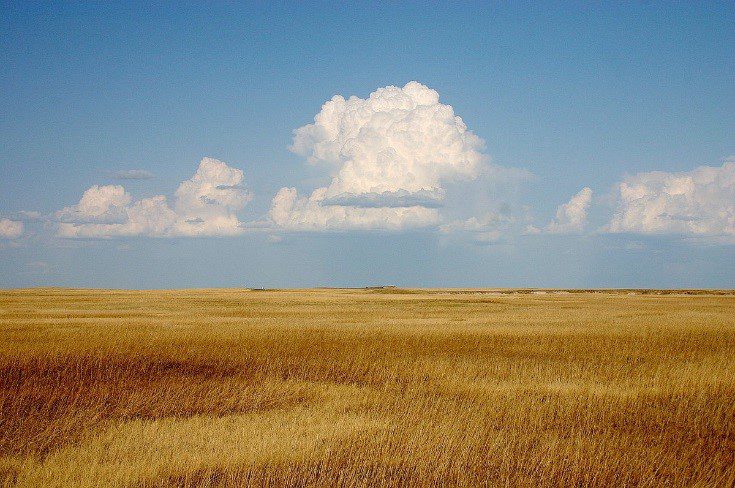Saving Habitat Saves Species: 14 Top Scientists Call for a National Habitat Conservation System
By Pat Leonard
November 10, 2016

More than 300 million acres of public land in the United States are protected–a mix of national parks, refuges, and wilderness areas that equals more than 13 percent of all land in the 50 states and U.S. territories. Despite those protections and past conservation successes, studies show the loss of habitats and biodiversity is accelerating, and climate change is expected to contribute further to the decline. Added to that is a contentious political climate that has put management of public lands in a tug-of-war between diametrically opposing viewpoints.
“Our protected lands system is unparalleled in the world in that it safeguards so much of our landscape and species for all Americans to enjoy,” says Cornell Lab conservation scientist Ken Rosenberg. “But it’s also a system that is increasingly under threat. There’s a big gap between those who want to remove protections and those who want to expand and improve the system.”
With the presidential election now over, and a new administration waiting in the wings, there could be an opportunity to see past these divisions to safeguard our beautiful landscapes and the creatures who live there. Top conservation leaders and scientists have joined forces in a report that calls for national habitat conservation system to do exactly that.
“There’s so much good habitat conservation work going on,” says lead author Jocelyn Aycrigg, a conservation biologist with the University of Idaho. “But what we don’t have is a comprehensive vision for conserving habitats all across the country.”
We already have a good start on assessing the current state of public conservation areas because they are identified in the Protected Areas Database of the United States. But as the map above shows, like random paint spatters, these areas are scattered and not managed with a unified goal.
There is precedent for this type of conservation system. The report singles out three models for developing a successful national habitat conservation system: The North American Bird Conservation Initiative in the United States, Natura 2000 in Europe, and the National Reserve System in Australia. What they have in common is a commitment to working with partners at all levels and with varying viewpoints, from local to federal, both private and governmental—the key to success for large-scale protection of lands.


To get the conversation started, the authors suggest convening a national forum of public and private conservation partners to oversee action in four key areas recommended in the report:
- Develop a common vision and establish measureable goals.
- Complete an assessment of the current state of conservation areas in the U.S.
- Set standards, monitor progress, and adjust as needed.
- Implement strategies to complete the national habitat conservation system.
“Our current system gives us a solid foundation for moving ahead,” says Aycrigg. “But it was developed with different priorities than we have today. With a comprehensive vision and network we can better share resources, address the gaps in our protected areas, and create the strategies needed to make everything work better without duplication of effort.”
Many of the strengths and weaknesses of the country’s conservation areas with regard to birds have already been highlighted in the 2011 U.S. State of the Birds on Public Lands and Waters report. Birds are a great indicator for the health of an ecosystem.
“The 2011 State of the Birds report uses birds to evaluate the health of habitats and relates it to the amount of land protection in each habitat,” explains Rosenberg. “Now we have to use that knowledge to strategically improve our conservation network by adding greater protection for the habitats that don’t have it.”
Conservation Where It’s Needed Most


Based on data analyzed for the State of the Birds reports, habitats in special need of attention include the nation’s grasslands and aridlands where conversion to agriculture and extraction of energy resources are contributing to steep bird population declines.
There are other ways to improve protection of habitats beyond national parks, refuges, and wilderness areas.
Improving management on multiple-use public lands would protect an additional 415 million acres, where recreation, logging, and even habitat and biodiversity conservation program exist, though the latter is not its primary use.
An expanded public lands network will complement existing private conserved lands (shown on the map in green) which can have conservation easements that provide a level of protection afforded by land trusts. Land trusts already protect an area larger than all our national parks combined. The Cornell Lab is collaborating with land trusts in the new Land Trust Bird Conservation Initiative, to benefit both habitat and bird conservation efforts.
Citizen-science data can also help inform the development of a national habitat conservation system by identifying species and monitoring effectiveness of conservation actions over time. There are many programs that collect data on animals, plant life, and, of course, birds. For example, eBird takes in millions of bird observations each month.
“I believe, if we don’t start thinking about conservation in a comprehensive, strategic way we’re not going to be able to halt or even slow down the loss of biodiversity,” Aycrigg concludes. “We want our report to get the conversation started on creating a national vision for conservation. Otherwise we may lose habitats and species before we even know how to save them.”


All About Birds is a free resource
Available for everyone,
funded by donors like you


